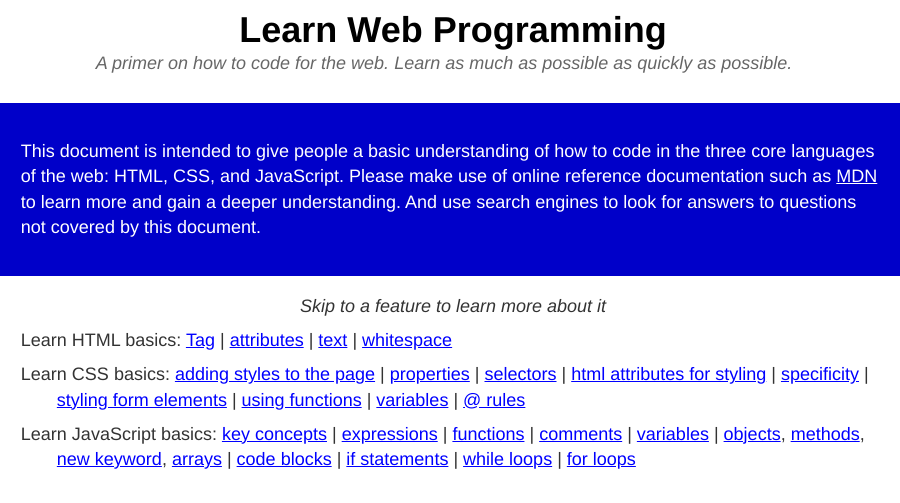Just finished a web coding primer, for the perchance community. I’m hoping it helps people get started with the non-perchance side of perchance quicker and easier. 👍
(It’s not intended as full documentation, just a taster of common features, and a glimpse of more complex concepts so people know they can search for them elsewhere.)



Thanks for those 👍
Regarding the grammar points, I’m a writer, so I get what you mean. But in the more casual style which I prefer, when incomplete sentences are really continuances from the previous sentence are actually okay. It really matches how we speak every day. We don’t talk thinking about sentences and punctuation; it’s more like one huge run-on sentence. This is how it looks in text.
I don’t write everything like that obviously, but that’s where such constructions come from, and why they exist in fiction and other less formal text. In my documentation (here and elsewhere) I’m not going for a formal style, but a more casual one. It gives me more leeway to write expressively, while I also make it very clear on the technical side.
If your way of writing is different, that’s all fine of course. But that note in particular just isn’t what I’m going for. I may or may not change such things, on a case by case basis.
its: in that case it’s a possessive “its”, which does not have an apostrophe. When the possessor is “it” we just use an “s” without the apostrophe. [article] Only if it’s a contraction (as init is👉it's) would it have an apostrophe. 👍also i notice your font isn’t Emilys Candy; but that’s ok. I forgive you. (just this once)
Had to look that one up–LOL 🤣